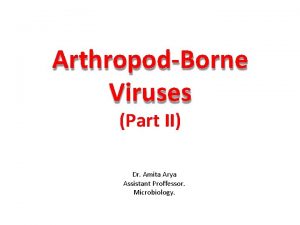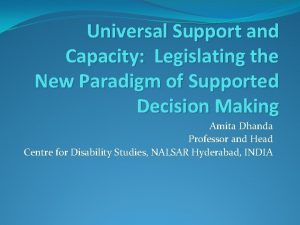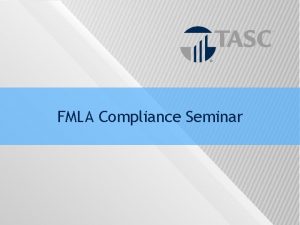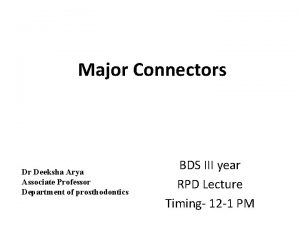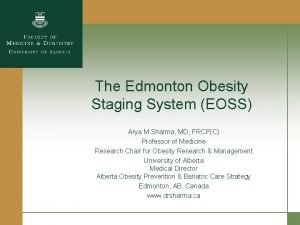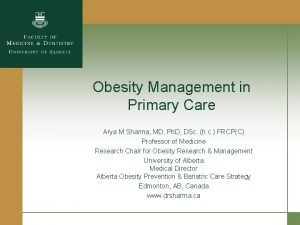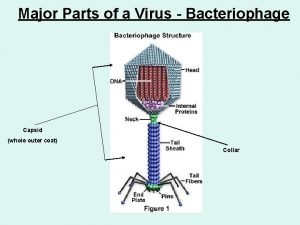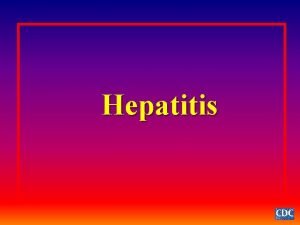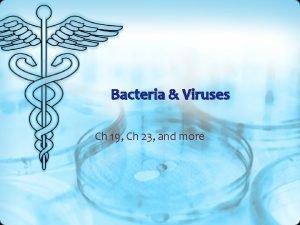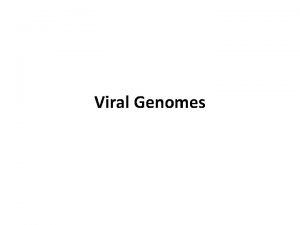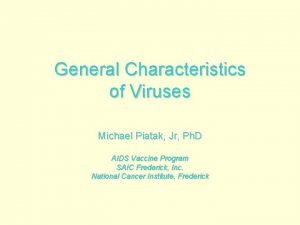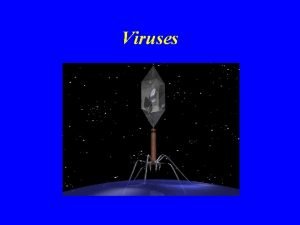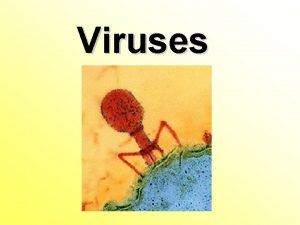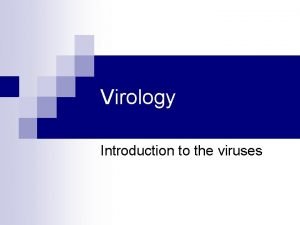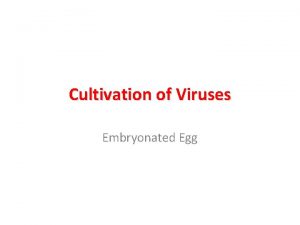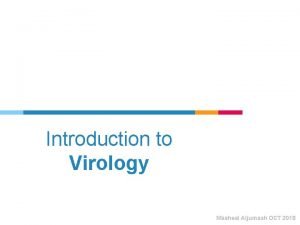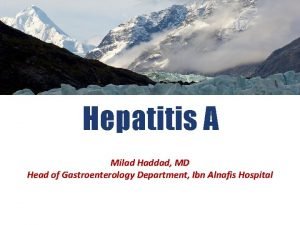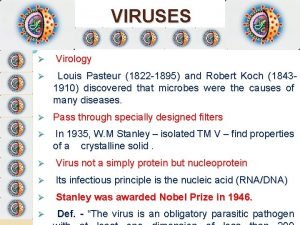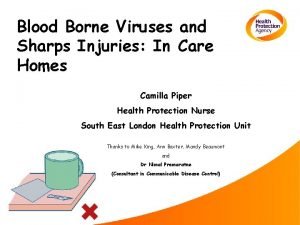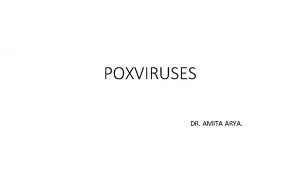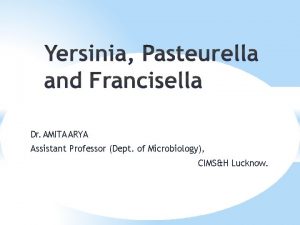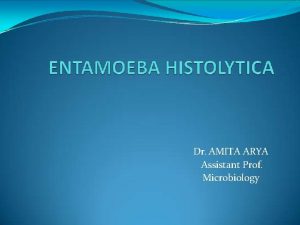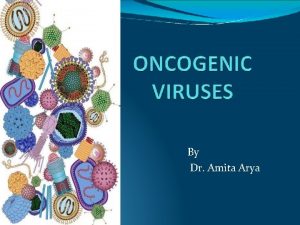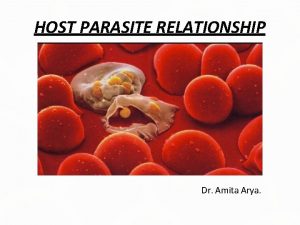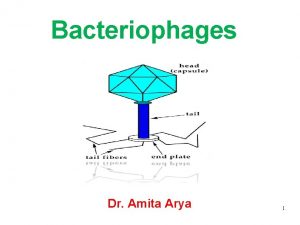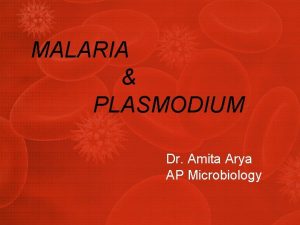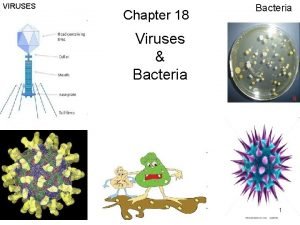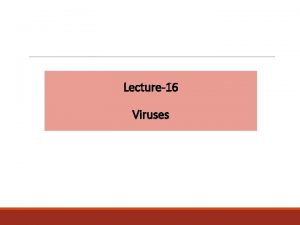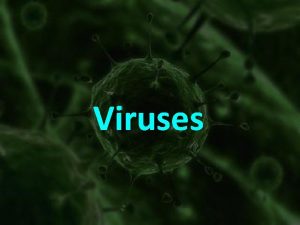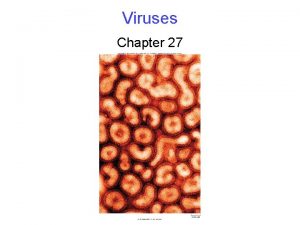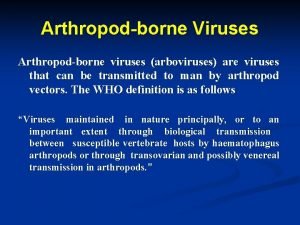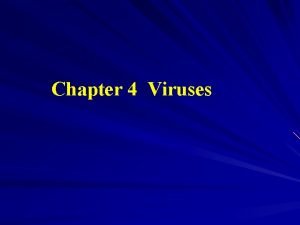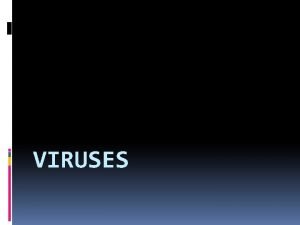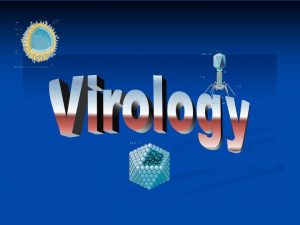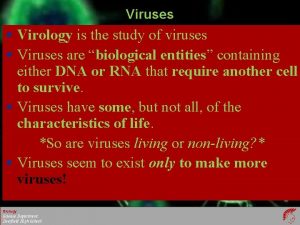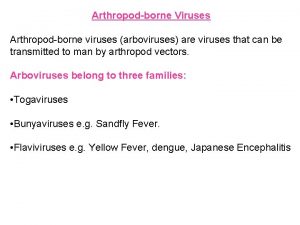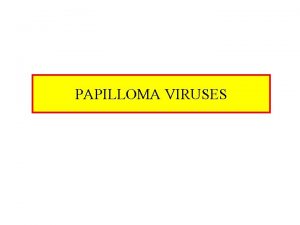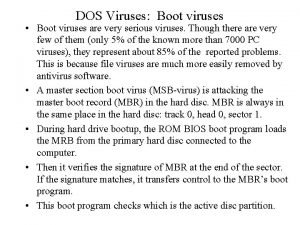HIVAIDS Retro Viruses Dr AMITA ARYA History of






































- Slides: 38

HIV/AIDS (Retro Viruses) Dr. AMITA ARYA

History of HIV/AIDS It is now thought that HIV came from a similar virus found in chimpanzees - SIV. HIV probably entered the United States around 1970 CDC in 1981 noticed unusual clusters of Kaposi’s sarcoma in gay men in NY and San Francisco, which led to the disease to be called GRID (Gay Related Immune Deficiency). By 1982 the disease was apparent in heterosexuals and was renamed AIDS (Acquired Immune Deficiency). 1984 - Scientists identify HIV (initially called HTLV-III or LAV) as the cause of AIDS 1987 - AZT is the first drug approved for treating AIDS

Cases of HIV infection and AIDS in the United States and Dependent Areas, 2006 Transmission categories of adults and Sex of adults and adolescents with HIV/AIDS diagnosed during 2006

Cases of HIV infection and AIDS in State of Louisiana - AIDS



EPIDEMIOLOGY Males>females Occurs in all ages and ethnic groups All areas of the country are affected 80 million people are infected 40 million deaths occur worldwide. AIDS is now the second leading cause of death for all men aged 25 -44 years Unintended injuries is #1 and heart disease is #3 for this age group Prevalence in India is 0. 27%. Andhra Pradesh, Maharashtra and Karnataka were worst affected states.

Risk Factors Anyone of any age, race, sex or sexual orientation can be infected with HIV, but you're at greatest risk of HIV/AIDS if you: Have unprotected sex with multiple partners. You're at risk whether you're heterosexual, homosexual or bisexual. Unprotected sex means having sex without using a new latex or polyurethane condom every time. Have unprotected sex with someone who is HIV-positive. Have another sexually transmitted disease, such as syphilis, herpes, chlamydia, gonorrhea or bacterial vaginosis. Share needles during intravenous drug use. Received a blood transfusion or blood products before 1985. Have fewer copies of a gene called CCL 3 L 1 that helps fight HIV infection. Newborns or nursing infants whose mothers tested positive for HIV but did not receive treatment also are at high risk.

Risk Factors Most dangerous sexual practice: anal intercourse Recent evidence that HIV can be transmitted by oral sex If the patient has AIDS today, most likely homo/bisexual man If recently became HIV positive, most likely IV drug abuser Fastest growing method of HIV transmission: heterosexual contact (esp. for blacks and hispanics) Heterosexual transmission is easier from men to women than from women to men

Risk Factors Risk of acquiring for men is greater if contact occurs during menstruation Uncircumcised men are more likely to be seropositive and contract HIV during sex HIV transmission rates: Risk from single sexual encounter with man who is not a member of a risk group: 1 in 5 million Risk from single encounter with man who is a member of a high risk group: 1 in 20 to 1 in 2 Needle-stick (with HIV-positive blood): 1 in 100 to 1 in 1000 (average 1 in 250) Seroconversion from blood transfusion: 2 of 3

Risk Factors If mother is HIV positive, 100% of children will test positive at birth About 20% of these will remain HIV positive after 1 year Breast feeding increases transmission rate AZT (zidovudine/Azidothymidine) reduces risk by half (to about 10%). AZT + c-section reduces transmission rate to 5% Neverapine: If given during labor to mother and to child after birth, cuts rate to 10%

HIV does not make people dangerous to know, so you can shake their hands and give them a hug: Heaven knows they need it. Princess Diana

Prevention There's no vaccine to prevent HIV infection and no cure for AIDS. But it's possible to protect yourself and others from infection. That means educating yourself about HIV and avoiding any behavior that allows HIV-infected fluids — blood, semen, vaginal secretions and breast milk — into your body. If you're HIV-negative Educate yourself and others. Know the HIV status of any sexual partner. Use a new latex or polyurethane condom every time you have sex. Consider male circumcision. Use a clean needle. Be cautious about blood products in certain countries. Get regular screening tests. Don't become complacent.

Prevention If you're HIV-positive Follow safe-sex practices. Tell your sexual partners you have HIV. If your partner is pregnant, tell her you have HIV. Tell others who need to know. Don't share needles or syringes. Don't donate blood or organs. Don't share razor blades or toothbrushes. If you're pregnant, get medical care right away.

Causative agent: Human Immuno-deficiency Virus

Enveloped RNA retrovirus Spherical 120 nm in diameter envelope proteins make the spikes on the • membrane. Enveloped truncated conical capsid Electron dense core Two copies of the single stranded (+) RNA Has enzymes: Reverse transcriptase, Integrase & Protease Has gag, pol and env structural genes Has LTR (long terminal repeats) rev and neg regulatory genes




• HIV infects CD-4 positive cells – CD 4+ T-cell lymphocytes – Macrophages – Lymph node follicular dendritic cells – Langerhans cells • Binding to CD 4 by gp 120 • Entry into cell by fusion requires gp 41 and coreceptors – CCR 5 (Beta chemokine receptor)

– CXCR 4 (alpha chemokine receptor) • Envelope lost and RNA uncoated • DNA made from RNA using reverse transcriptase • DNA and Integrase migrate to nucleus forming a provirus by integrating viral DNA to host DNA

• Rate of viral replication regulated by the activity of regulatory proteins (tat/rev, nef, etc) • Co-infections (e. g. , mycobacterial) stimulate the HIV-infected cells to produce more virus • Transcription and translation produces necessary polyprotiens which are cleaved by the HIV protease • Assembly • Maturation/release of virus


1. Acute HIV Disease (3 to 6 weeks) • Lymph node enlargement. • Viremia. • Flu like illnesses. • CD 4 T-cell drop is diagnostic.

2. Asymptomatic Stage : • CD 4 T- cell count becomes normal. • Clinical latency stage. • HIV infected cells persists in lymph nodes, so high level of viral replication occurs. • Lasts for 10 years. • If untreated, death may occur.

3. Persistent Generalized Lymphadenopathy(PGL): • Cough and shortness of breath 30 % of the infected people develop PGL. • PGL is defined as enlarged lymph nodes more than 1 cm in size, in two non-contagious sites, persisting for at least 3 months.

4. Symptomatic HIV Infection (AIDS related Complex) • A CD 4 lymphocyte count of 200 or less — a normal count ranges from 800 to 1, 200. • Weight loss (more than 10% of body weight. ) • Soaking night sweats • Shaking chills or fever higher than 100 F (38 C) for several weeks • Dry cough and shortness of breath • Mild opportunistic infection. • Chronic diarrhea more than 1 month.

5. AIDS • Advanced end stage of HIV infection is AIDS. • Rapid fall in CD 4 T-cells (less than 200 cells) • High viral load. • Lymphoid tissue replaced by fibrous tissue. • Opportunastic infection due to immunosuppression. • CNS lymphoma may occur. • HIV Encephalopathy is induced.

• Symptoms of HIV in children : Children who are HIV-positive may experience: • Difficulty gaining weight • Difficulty growing normally • Problems walking • Delayed mental development • Severe forms of common childhood illnesses such as ear infections (otitis media), pneumonia and tonsillitis

• AIDS defining conditions: • Encephalopathy, HIV-related • Pneumonia, recurrent (leading cause of death)


Specific Tests For HIV Infections: 1. Screening Tests • ELISA (Enzyme Linked Immuno-Sorbent Assay): Done to detect HIV antibodies in patient’s serum (antigens used are p 24, p 17, gp 160, gp 120, and gp 41). • Rapid Card Test 2. Supplement Tests • • Western blot for antibodies specific to HIV Immunoelectrofluorescence Radio-immune precipitation assay Line immunoassay

3. Confirmatory Tests • Anti-p 24 is the first reliably detected antibody • Viral culture • HIV DNA PCR (Polymerase Chain Reaction) • Qualitative to detect HIV infection in newborns of mothers are HIV+ • Quantitative HIV DNA PCR to determine viral load to assess treatment

Non-Specific Tests: • Low CD 4 T-Cells count • Hypergammaglobulinemia • Altered CD 4 -CD 8 T-cell ratio

The drugs do not kill all the viruses, however the prelong the life improve quality of life Decrease viral load Immune-reconstruction occurs Reduces dsiease transmission. • HAART: Highly Affective Anti-Retro Viral Therapy: Physicians consider 200 to 350 CD 4 cells/mm 3 as the range to consider starting HAART (Highly Active Antiretroviral Therapy). • HAART combines two types of antiretroviral drugs

• RTI’s (Reverse Transcriptase Inhibitors): Zidovudine • (AZT/ZDV), Didanosine (DDI), Zalcitabine (DDC), Stavudine (D 4 T), Lamivudine (3 TC) • NNRTI’s (Non-Nucleoside RTI’S) : Delavirdine, Nevirapine, Efavirenz • Protease Inhibitors: Indinavir, Ritonavir

For needle stick: ZDV+3 TC 1 month, but in high risk (high viral RNA copies) a combination of ZDV+3 TC+Indinavir Pregnancy: ZDV full dose, trimester 2 and 3+ 6 weeks to neonate reduces vertical transmission by 80% ZDV restricted to intrapartum period/NEVIRAPINE-1 dose at onset of delivery+one dose to neonate Symptomatic tx and antibiotics/antivirals/glucocorticoids/thalidomide /antifungals/metronidazole for bacterial, viral, autoimmune, fungal and parasitic infections.

THANK YOU!
 Amita arya
Amita arya Lysogenic cycle animation
Lysogenic cycle animation Https://m..com/watch?v=nqecciuc7jy
Https://m..com/watch?v=nqecciuc7jy Amita dhanda
Amita dhanda Tasc fmla
Tasc fmla Amita prasad ias
Amita prasad ias Amita mehta nasa
Amita mehta nasa Amita mission statement
Amita mission statement Indo arya dan dravida
Indo arya dan dravida Anterior posterior palatal strap indications
Anterior posterior palatal strap indications Bangsa arya
Bangsa arya Percampuran kebudayaan dravida dan arya menghasilkan agama
Percampuran kebudayaan dravida dan arya menghasilkan agama Arya south asia 46m series 14msinghtechcrunch
Arya south asia 46m series 14msinghtechcrunch @arya ia:http://work4unity.in/haicantik.html
@arya ia:http://work4unity.in/haicantik.html @arya ia:http://work4unity.in/haicantik.html noh salin aj
@arya ia:http://work4unity.in/haicantik.html noh salin aj Eoss stage
Eoss stage Arya kimia
Arya kimia Opera arya
Opera arya Arya overweight
Arya overweight Parts of viruses
Parts of viruses Best viruses
Best viruses Hepatotropic viruses
Hepatotropic viruses Chapter 20 viruses and prokaryotes
Chapter 20 viruses and prokaryotes Are viruses alive yes or no
Are viruses alive yes or no Smallest infectious agents
Smallest infectious agents General characteristics of viruses
General characteristics of viruses Tcid
Tcid General properties of viruses
General properties of viruses Chapter 18 section 1 bacteria
Chapter 18 section 1 bacteria Importance of viruses
Importance of viruses Biosynthesis of rna viruses
Biosynthesis of rna viruses Cultivation of viruses
Cultivation of viruses Baltimore classification
Baltimore classification Jobpair
Jobpair Milad haddad
Milad haddad Importance of viruses
Importance of viruses Blood borne viruses
Blood borne viruses Computer viruses presentation
Computer viruses presentation Viruses
Viruses
